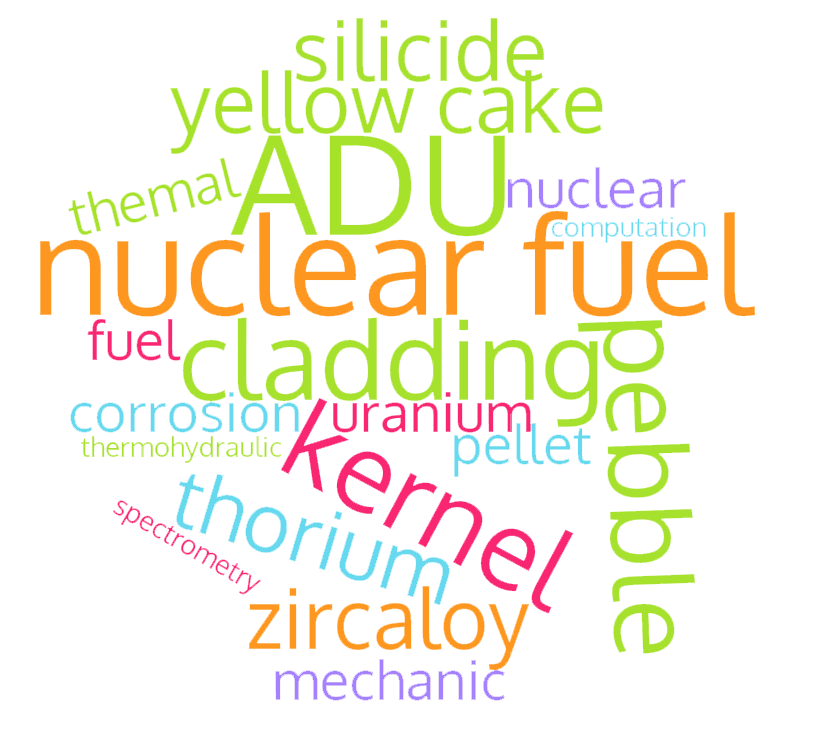KOMPARASI HASIL ANALISIS KOMPOSISI KIMIA DI DALAM PADUAN U-Zr-Nb DENGAN MENGGUNAKAN TEKNIK XRF DAN AAS
DOI: http://dx.doi.org/10.17146/urania.2011.17.3.687
Sari
Analisis komposisi kimia paduan U-Zr-Nb dengan menggunakan teknik Fluorosesi Sinar X (XRF) dan Sepektroskopi Serapan Atom (AAS) telah dilakukan. Analisis komposisi perlu dilakukan untuk menentukan karakteristik bahan bakar selama proses fabrikasi maupun di dalam reaktor. Penggunaan dua macam teknik analisis agar diperoleh hasil analisis yang akurat. Percobaan ini dilakukan untuk menentukan komposisi unsur utama dan pengotor di dalam paduan U-Zr-Nb. Mula-mula paduan U-Zr-Nb yang bervariasi komposisi Nb berturut-turut 1%, 4%, 7% ( U-10%Zr-1%Nb, U-10%Zr-4%Nb dan U-10%-7%Nb) dipotong-potong untuk dilakukan analisis komposisinya. Dari hasil analisis dengan menggunakan teknik XRF diperoleh komposisi kimia paduan U-10%Zr-1%Nb, U-10%Zr-4%Nb dan U-10%Zr-7%Nb) masing-masing mempunyai kandungan unsur sebagai berikut: U(87,8858%), Zr(2,6097%) dan Nb (0,2206%) ; U (87,8556%), Zr (2,6302%), dan Nb (0,6573%); U (84,6334%), Zr (2,5773%) , dan Nb (1,0940 %) berat. Hasil analisis dengan menggunakan teknik AAS pada ketiga sampel diperoleh kadar Zr berturut turut : 9,25 %; 8,90% dan 9,80 % sedangkan kadar Nb tidak terdeteksi. Sementara itu, hasil analisis unsur pengotor pada ketiga sampel diperoleh hampir semua unsur yang ada masih memenuhi persyaratan bahan bakar kecuali unsur Zn. Unsur Zn yang ada pada ketiga sampel paduan U-10%-Zr1%Nb, U-10%Zr-4%Nb dan U-10%-7%Nb adalah 1,3266%; 3,2756 %, dan 1,0927 % berat. Dapat disimpulkan bahwa hasil analisis kandungan unsur dan pengotor di dalam paduan U-Zr-Nb dengan menggunakan kedua teknik XRF dan AAS terlihat bahwa hasil analisis yang lebih mendekati dengan komposisi paduan UZrNb yang direncanakan adalah dengan menggunakan teknik AAS.
Kata kunci : Analisis komposisi, U-Zr-Nb, XRF, dan AAS.
U-Zr-Nb alloy chemical composition analysis using X Ray Flourecency (XRF) and Atomic Absorption Spectroscopy (AAS) techniques hade been conducted, where U-Zr- Nb alloy was chosen as candidates for new high-density fuel for future research reactors . Composition analysis is necessary because the composition of elements in the fuel will determine the characteristics of fuel during the fabrication process and in the reactor. The use of two kinds of analysis techniques were designed to obtain accurate analysis results. The experiment was conducted to determine the major element composition and impurities in the alloy U-Zr-Nb. First U-Zr-Nb varying alloy composition Nb were respectively 1%, 4%, 7% (U10% Zr1% Nb, U10% Zr4% Nb and U10% 7% Nb) as results of the melting process of measuring the diameter of 120 mm crushed on the surface bottom. Once on the bottom surface is smooth, then analyzed using XRF techniques. To analyze the elements using AAS techniques, alloy U-Zr-Nb cut into 10 mm x 5 mm then dissolved using HF and nitric acid. Solution that occurred were analyzed using AAS technique. From the analysis using the XRF technique is obtained the alloy U-10% Zr-1% Nb, U-10% Zr-4% Nb and Zr-10% U-7% Nb) had a content of each element as follows: U (87.8858%), Zr (2.6097%) and Nb (0.2206%), U (87.8556%), Zr (2.6302%), and Nb (0.6573%); U (84.6334%), Zr (2.5773%), and Nb (1.0940) weight. Results of analysis using AAS techniques on samples obtained third consecutive Zr content of 9.25%, 8.90% and 9.80% while the content of Nb was not detected. Meanwhile, the results of elemental analysis of impurities in all three samples showed that almost all the elements are still qualify as fuel except Zn element. Element Zn at the three samples of each alloys U-10% Zr-1% Nb, U-10% Zr-4% Nb and U-10% Zr-7%Nb is 1.3266%, 3.2756% and 1.0927% weight. It could be concluded that the results of analysis of elemental content and impurities in the alloy U-Nb-Zr using both XRF and AAS visible that results of the analysis technique which is was approach composition of U-Zr-Nb alloy that planned by using AAS technique.
Keyword : Composition analysis, U-Zr-Nb, XRF, and AAS.
Teks Lengkap:
PDFRefbacks
- Saat ini tidak ada refbacks.
Penerbit: Pusat Riset Teknologi Bahan Nuklir dan Limbah Radioaktif
Diindeks oleh:









